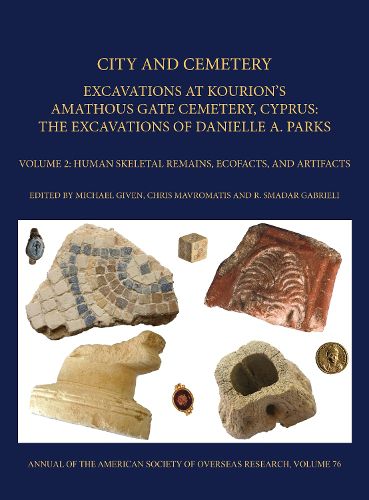Readings Newsletter
Become a Readings Member to make your shopping experience even easier.
Sign in or sign up for free!
You’re not far away from qualifying for FREE standard shipping within Australia
You’ve qualified for FREE standard shipping within Australia
The cart is loading…






The Amathous Gate Cemetery played a key role in the spatial and social organization of the well-preserved city of Kourion on the south coast of Cyprus, and in its transformations between the Hellenistic and Byzantine periods, from massively destructive earthquakes and the rise of Christianity to new social and administrative structures.
The excavations were directed by the late Danielle A. Parks from 1995 to 2000, and found striking evidence for burial and commemoration, a wide range of material culture, and a large assemblage of well-preserved human remains. The project uses an innovative methodology for analysing mixed stratigraphy and legacy data, which we offer to those researching sites with similar challenges.
This volume presents detailed descriptions and interpretations of the ecofacts and artifacts. These include human and animal bone, pottery, lamps, figurines, stone objects, painted plaster, glass, jewellery, coins, and loom weights. Scientific methods include isotopic analysis of the bones, Neutron Activation Analysis of the pottery, and spectroscopic analysis of the glass.
$9.00 standard shipping within Australia
FREE standard shipping within Australia for orders over $100.00
Express & International shipping calculated at checkout
The Amathous Gate Cemetery played a key role in the spatial and social organization of the well-preserved city of Kourion on the south coast of Cyprus, and in its transformations between the Hellenistic and Byzantine periods, from massively destructive earthquakes and the rise of Christianity to new social and administrative structures.
The excavations were directed by the late Danielle A. Parks from 1995 to 2000, and found striking evidence for burial and commemoration, a wide range of material culture, and a large assemblage of well-preserved human remains. The project uses an innovative methodology for analysing mixed stratigraphy and legacy data, which we offer to those researching sites with similar challenges.
This volume presents detailed descriptions and interpretations of the ecofacts and artifacts. These include human and animal bone, pottery, lamps, figurines, stone objects, painted plaster, glass, jewellery, coins, and loom weights. Scientific methods include isotopic analysis of the bones, Neutron Activation Analysis of the pottery, and spectroscopic analysis of the glass.